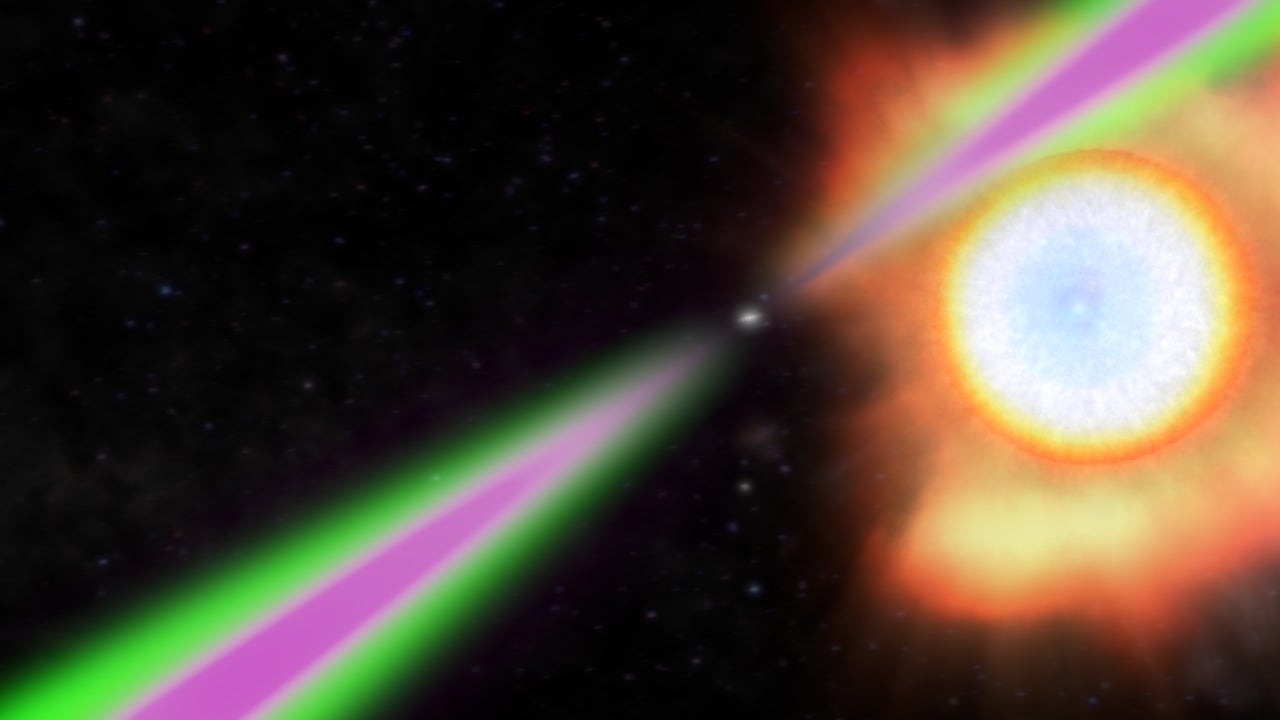Scientists discover new ‘spider star’ using a telescope that has now been destroyed
One star is thought to be a crossbreed of the redback and black widow stars

Astronomers have found a new kind of spider star in space using a telescope that has now been destroyed.
Spider stars are types of neutron stars, which are formed in binary systems. When a giant star collapses and becomes a neutron star, it can sometimes rip material from nearby stars – similar to how spiders devour their partners.
"The essential features of black widow and redback binaries are that they place a normal but very low-mass star in close proximity to a millisecond pulsar, which has disastrous consequences for the star," Roger Romani, a member of the Kavli Institute for Particle Astrophysics and Cosmology said in a statement.
There are two kinds of spider stars: black widows, and redbacks. Black widow spider stars are formed when the companion star has a comparatively low mass (under 0.1 solar masses), while redback spider stars form when the second star is heavier.
These neutron stars spin once every 30 milliseconds letting off a flash of light with each turn, using the material devoured from the second star to propel themselves around - getting so close to other stars that they manage to peel away their surfaces and absorb material like a spider eating their mate.
Scientists from the George Mason University in Virginia discovered eight of these stars using the 327MHz receiver at the Arecibo telescope, which has since been destroyed.
The 900-ton radio telescope in Puerto Rico was once the biggest in the world, but but sustained damage led its managers to decide that it could not be fixed, and eventually collapsed.
Three of the stars were found to be black widows, while another one was a redback hosting a non-degenerate companion.
However, one star exhibited behaviours of both classifications: a heavy radio eclipse similar to redbacks, but a mass that would either be unusually high for a black widow or low for a redback.
"This system may represent a rare middle-ground case between these two observational classes," the astronomers wrote in the paper, which has been published on arXiv.
Join our commenting forum
Join thought-provoking conversations, follow other Independent readers and see their replies
Comments